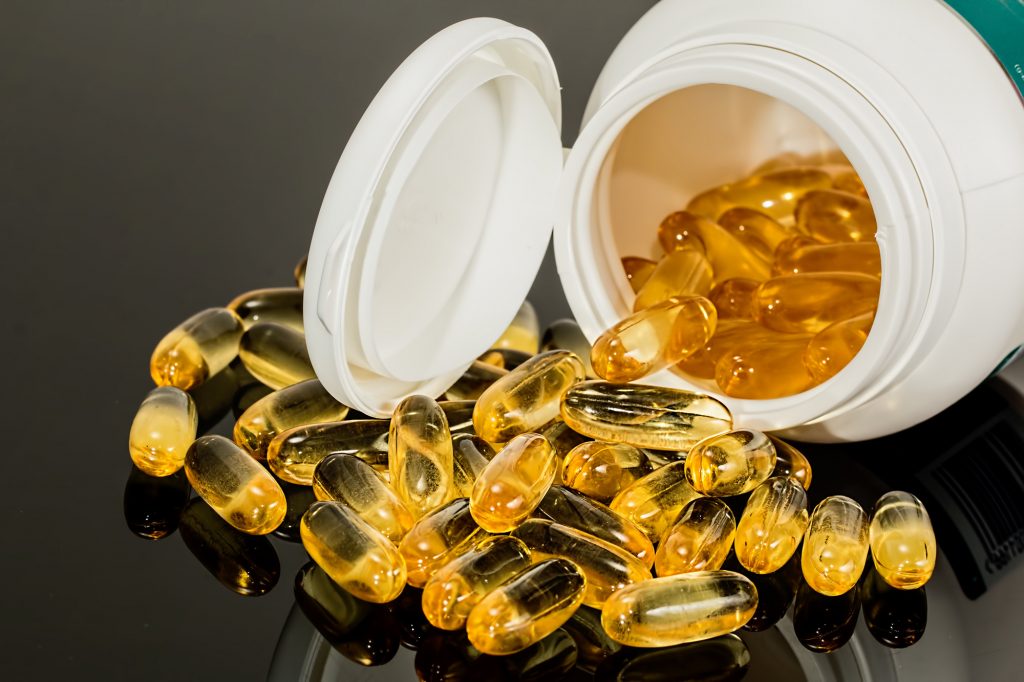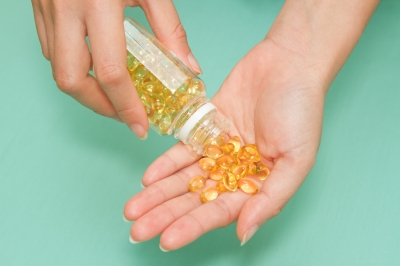Lower Cholesterol – How do I increase HDL cholesterol?

Finally, you want more of something instead of less! HDL (high-density lipoprotein) cholesterol is also known as the “good” cholesterol. HDL removes cholesterol from your bloodstream and carries it back to the liver. I like to think of HDL as a vacuum cleaner, picking up cholesterol LDL leaves behind in your arteries. HDL should be greater than 40 mg/dL, ideally greater than 60 mg/dL.
Physical Activity
One of the best ways to increase your HDL is through physical activity, specifically aerobic activity (jogging, swimming, biking). For results, you need at least 120 minutes of moderate physical activity each week. In this case, vigorous activity does not have more of an impact, but duration does. The longer you work out the greater them impact on HDL. Work your way up to a minimum of 30 minutes 4 days/week. If you’re not currently physically active, consult your MD before starting an exercise program.
Saturated and Trans Fats
Limiting unhealthy fats will also impact HDL, so look at your saturated fat and trans fat intake and see where you can make cuts. Your total fat intake for the day should be limited to 30% of your daily calories. Of this 30%, only 10% should be from saturated fat and ideally zero from trans fats. To attain these levels you’ll need to select healthy choices when dining out, read food labels, select healthy fats when cooking, select lean cuts of meat, etc.
Omega 3’s
Selecting healthy fats, such as omega 3’s, will raise HDL while lowering LDL. Incorporating healthy omega 3 fatty acids will also improve your total cholesterol to HDL ratio. Also, look for sources rich in omega 3 fatty acids you can add to your diet, such as fish and ground flaxseed..
Dietary Fiber
A high fiber diet does not directly boost HDL levels. However, a high fiber diet plays a role in lowering LDL cholesterol. As LDL is lowered, your Total Cholesterol to HDL ratio improves. For the greatest impact, eat a diet especially rich in soluble fiber and select whole grain products, fruits, and vegetables daily.
Alcohol
Alcohol plays a role in raising HDL levels also. I’m not a big advocate of using alcohol to raise HDL, so if you already consume alcohol 1-2 drinks per day can raise levels. More than 1-2 drinks per day will increase your health problems. If you do not drink, do not start.
All the best,
Lisa Nelson RD
How to Lower Cholesterol in 8 Simple Steps
Heart Disease – Use Vitamin C to Decrease Heart Disease Risk
A new Norwegian study – Diet and Omega 3 Fatty Acid Intervention – found individuals who increased their intake of fruits and berries decreased carotid artery thickening (atherosclerosis – hardening of the arteries), which leads to increased risk of heart disease.
The study followed over 560 men with an average age of 70 years-old for three years. Throughout the three years carotid artery thickness was measured and food intake was assessed via food-frequency questionnaires. Participants who increased vitamin C rich foods, such as fruit and berries, along with a Mediterranean diet plan had reduced arterial thickening. The more vitamin C the less the thickening.
The study concluded that even the elderly can make diet changes and see positive health benefits. We’ve known that fruits are an essential part of a heart healthy diet plan and this diet re-emphasizes that point.
All the best,
Lisa Nelson RD
Be Heart Healthy and Lose Weight
Heart Health – Are Omega 6's Good or Bad?
I and other experts so frequently discuss omega 3 fatty acids and the health benefits that you may think all other types of fat are “bad”. That’s not the case. There are many types of heart healthy fats, including omega 6 fatty acids. At least 5-10% of your daily calories should come from omega 6 fatty acids. Some sources of omega 6’s are safflower, sunflower, and soybean oils. Replacing unhealthy fats in your diet with heart healthy unsaturated fats (such as omega 6’s) can decreased coronary heart disease by 24%.
The problem comes from our diets containing too much omega 6. The typical American diet is very high in omega 6 fatty acids. This leads to problems with inflammation when the ratio of omega 3 to omega 6 intake is drastically distorted and is why you don’t hear experts recommending you increase omega 6’s in your diet. You probably have more than enough already and need to work on balancing your omega 6’s with omega 3’s to promote optimal heart health.
February is American Heart Month. In recognition of American Heart Month you can access Heart Health Made Easy at a 25% savings. Learn more about this take action guide to lower cholesterol and blood pressure at http://www.hearthealthmadeeasy.com.
All the best,
Lisa Nelson RD
Be Heart Healthy and Lose Weight
Lower Cholesterol – How much omega 3 do you need to lower cholesterol?

Increasing the amount of omega-3 fats in our diet and decreasing the amount of omega-6 is beneficial in reducing your risk for heart disease. Most American’s consume a high omega-6 diet, with omega 3 being a common deficiency. Omega 3 deficiencies and the imbalance between omega 3 and omega 6 intakes have been linked with serious conditions, including heart attacks. Successfully maintaining a ratio of 4:1 to 1:1 omega 6 to omega 3 will help lower cholesterol levels and control high blood pressure.
Now, how much omega 3 do you need to add?
This is under debate and more research is being done. Right now the range experts recommend is from 500-2000 mg/day. Here are the current American Heart Association (AHA) recommendations.
The AHA recommends that individuals without heart disease eat a variety of fish twice a week, use heart healthy oils (flaxseed, canola, soybean oils), and consume flaxseed and walnuts.
For individuals with heart disease, the AHA recommends 1 g of EPA (eicosapentanoic acid) + DHA (docosahexaenoic acid) daily, preferably from fatty fish.
The AHA recommends 2 to 4 g of EPA + DHA daily, under physician’s care only, for individuals that need to lower triglycerides. High doses, > 3 grams/day, can result in excessive bleeding. (Do not self medicate! Talk to your MD before supplementing greater than 2 grams.)
Omega 3 Content of Different Foods
Wild Salmon, 4 oz. 1700 mg (DHA 700 mg, EPA 400 mg)
Tuna canned in water, 4 oz. 300 mg (DHA 200 mg, EPA 50 mg)
Cod, 4 oz. 600 mg (DHA 160 mg, EPA 50 mg)
Flaxseed, 1 Tbsp. 1000 mg (ALA – alpha–linolenic acid – 1000 mg)
Soybeans, dried, cooked ½ cup 500 mg (DHA/EPA 250 mg, ALA 250 mg)
Walnuts, 1 oz. 2570 mg (ALA 2570 mg)
Pecans, 1 oz. 280 mg (ALA 280 mg)
Wheat germ, ¼ cup 210 mg (ALA 210 mg)
Canola oil, 1 Tbsp 1300 mg (ALA 1300 mg)
Olive oil, 1 Tbsp 100 mg (ALA 100 mg)
Now, there’s a reason I included details on amounts of ALA, DHA and EPA for each omega 3 source. Right now, DHA and EPA have a greater link with lower cholesterol levels, lower triglycerides, and higher HDL levels than ALA. The body is able to convert ALA to EPA and DHA, but the conversion rate is low; therefore, it is best to include high DHA and EPA sources in your eating plan.
My recommendation:
As a preventive measure and to promote lower cholesterol and blood pressure control, I recommend eating fish twice a week, select a supplement that will provide you at least 1000 mg of omega 3 fatty acids daily (choose a good source of DHA and EPA), and use ground flaxseed when appropriate in your meal preparation.
February is American Heart Month. In recognition of American Heart Month you can access Heart Health Made Easy at a 25% savings. Learn more about this take action guide to lower cholesterol and blood pressure at http://www.hearthealthmadeeasy.com.
All the best,
Lisa Nelson RD
Heart Health – Is fish oil safe?

Fish oil supplements are a great alternative for people that do not eat fish often to boost their omega 3 intake and promote heart health.
There’s been some media speculation about possible contaminants, such as mercury, within fish oil supplements. However, good news if you supplement fish oil, there are minimal contaminants within the supplements!
There have been several studies, specifically a report by ConsumerLab.com and Harvard Medical School, finding no mercury or PCBs within over 40 popular fish oil supplements. Fish oil is typically taken from fish, such as cod and sardines, that do not contain high levels of mercury. Also, many manufacturers distill the fish oil to remove contaminants.
All the best,
Lisa Nelson RD
Image courtesy of Praisaeng / FreeDigitalPhotos.net
Lower Cholesterol – Top Omega 3 Sources to Lower Cholesterol
If you have been following along, you know from the article "Get a Grip on Fatty Acids" that the right ratio of omega 6 to omega 3 fatty acids promotes a lower cholesterol.
The goal is not to cut omega 6 fatty acids (such as corn oil, beef, and chicken) completely from the diet, but to achieve a ratio of 4:1 or 1:1 omega 6 to omega 3. In order to attain this ratio you need to increase your omega 3 intake.
Your options for doing this:
1. Eat fish at least twice a week.
If you like fish, this would be my first choice. Fish contains DHA. Research is starting to indicate health benefits, such as lower cholesterol, lower triglycerides, and higher HDL (good) cholesterol, linked to DHA alone. Be aware of mercury content of fish, especially if you are pregnant.
2. Take a fish oil supplement.
Start with the smallest bottle you can find and make sure you do not have the unpleasant side effect of burping with a fishy aftertaste. Not everyone has this problem, so you may be fine. To decrease likelihood of this problem I recommend taking the supplement and then eating. That way something is "on top" of the fish oil. Fish oil has a tendency to go rancid, so keep supplement refrigerated, especially if you buy a bottle of 250 or more.
3. Flaxseed.
You can buy flaxseed two different ways – whole seed or ground. In order for the body to utilize the omega-3 fatty acids, flaxseed must be ground. If the flaxseed is not ground it passes straight through the body without being absorbed. Flaxseed is high in fiber, so by ingesting whole flaxseed you have increased your fiber intake, which is beneficial, but if you grind your flaxseed you will have the added benefit of increasing your omega-3 fatty acid intake and lowering cholesterol.
4. Flaxseed oil supplement.
Provides the omega 3 fatty acid ALA in a simple supplement. Now, ALA is not as effective as DHA and EPA at lowering cholesterol, but still results in an improved ratio of omega 3 to omega 6. Again, may go rancid so refrigerate.
5. Add omega 3 nut and seed sources to your daily intake.
Especially walnuts, pumpkin seeds, Brazil nuts, and sesame seeds. Nuts are high calorie, so watch your intake. If you gain weight, you are not doing your heart any favors!
Access the ecourse How to Lower Cholesterol in 8 Simple Steps HERE.
All the best,
Lisa Nelson RD



